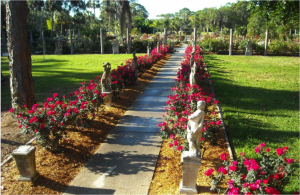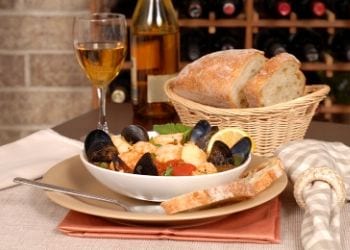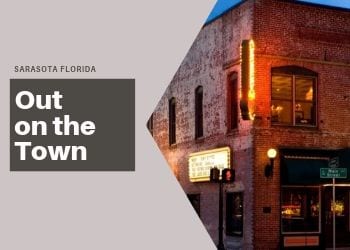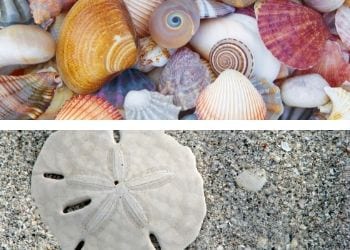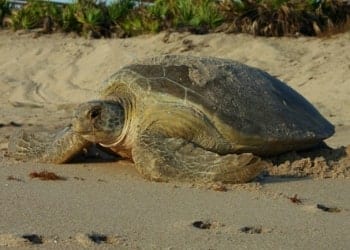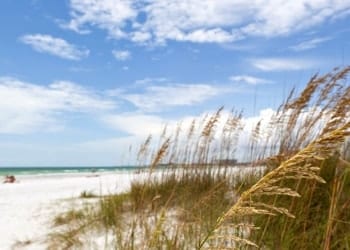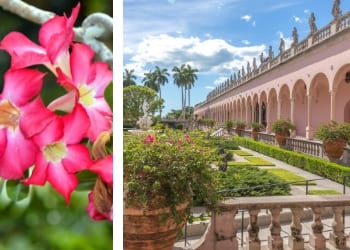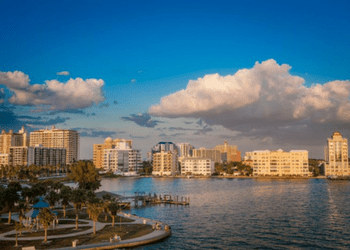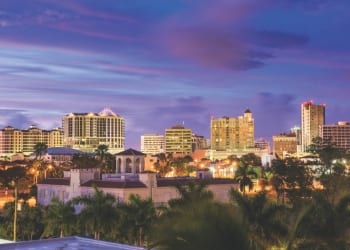Plus, the Ringling’s rose garden curator shares tips for growing your own roses.
Mable’s Rose Garden at The Ringling Museum is the oldest continuously growing rose garden in Florida, planted by John Ringling’s wife, Mable—with the help of a gardener, of course—on their bayfront estate in 1913. Today, more than 1,000 bushes, representing more than 400 varieties, fill the garden with magnificent color and fragrance.
Now is a great time to visit the rose garden, which is located just east of the couple’s grand Italianate mansion, the Ca d’Zan. The roses usually start to bloom about eight weeks after cut back, which means that, this year, they are blooming from April through December. (No admission fee is required to enjoy the Ringling Museum grounds.)
The museum will celebrate the legacy of Mable’s Rose Garden at its Blossoms & Brunch Saturday, April 18. Tickets are $120, and proceeds will go toward maintenance and improvements to the museum’s bayfront grounds.

Want to make like Mable and grow your own roses? Karen Smith, the curator of The Mable Ringling Rose Garden, shared four tips on how to do so:
Prepare the bed
“Prior to planting the roses, prepare the bed,” says Smith. “A raised bed is recommended in Florida so that you’re bringing in soil that is conducive to growing roses. A lower PH, around 6.5, is recommended.” She recommends soil with compost.
Water
“Roses drink a lot of water, around two inches per week. So, depending on the size of the bed, I irrigate three times a week,” says Smith.
Select the proper roses for your area
“We are in [planting] zone A or B. Some people like to select Northern roses that won’t do well in the heat down here. People should put in disease resistant roses because they do much better as far as keeping their foliage and living here,” says Smith. If you have a lot of room, she recommends old garden or antique roses; they’ll live longer and are less prone to disease.
Once established, feed with fertilizer at least four times per year
“I prefer an organic fertilizer,” says Smith. “Right now, I’m using a turkey manure; it’s 4-3-4, which indicates the amount of nitrogen, phosphorous and phosphates. The poultry manure will have more nitrogen than cow, horse or sheep manure. It doesn’t run right through the soil and lasts a lot longer.” (Note that Sarasota County bans fertilizers containing nitrogen or phosphorus from May 31 to Sept. 30 to reduce runoff into Sarasota Bay.)
If you enjoyed this article, please sign-up for our e-newsletter to follow our blog.
Content Courtesy of Sarasota Magazine
Ashley Cooper

